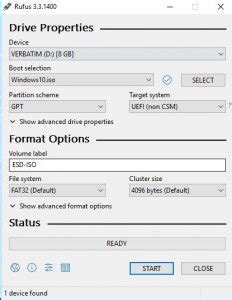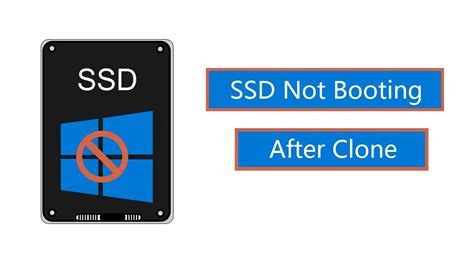cloned drive wont boot In an effort to preserve your time and prevent the recurrence of the situation where the cloned drive fails to launch, we have assembled a list of practical advice. These . See more Buy Dell 8GB DDR3L-1600 PC3L-12800 204Pin Sodimm Low Voltage RAM Memory Upgrade P/N SNPN2M64C/8G: Memory - Amazon.com FREE DELIVERY possible on eligible purchases
0 · windows 10 won't boot after clone
1 · ssd not booting after cloning
2 · make ssd bootable after cloning
3 · make drive bootable after clone
4 · make disk bootable after clone
5 · make a cloned disk bootable
6 · inaccessible boot device after cloning
7 · after cloning disk won't boot
1 Introduction. The Dell Tower uninterruptible power system (UPS) protects your sensitive electronic equipment from basic power problems such as power failures, power sags, power surges, brownouts, and line noise. Power outages can occur when you least expect them and power quality can be erratic.
Have you ever been annoyed that your cloned hard drive won’t boot? When you try to upgrade your hard drive to a new HDD or SSD without reinstalling Windows and all the previously installed programs, you’d prefer to clone hard drive. After that, you can boot from the cloned hard drive directly without reinstalling . See moreHere we provide two ways to make cloned drive bootable in two different situations. You can choose the appropriate solution based on your own . See moreIn an effort to preserve your time and prevent the recurrence of the situation where the cloned drive fails to launch, we have assembled a list of practical advice. These . See more1. Does cloning an SSD make it bootable? Yes, cloning a system SSD can make it bootable. When you clone an SSD, you create an exact copy . See more
I got an SSD nearly a month ago to replace my current HDD, as it's performance has been degrading and it currently runs at 100% no matter what I do to fix it. Since then I .
If you run into the case – cloned drive won’t boot Windows 11/10/8/7, how to fix it? This post shows you multiple fixes to help you out. Install onto an SSD using a bootable Windows 10 32-bit (1903) USB installer. Reboot w/target drive to make sure it works. Power down. Clone previously configured Win10 installation from old HDD to SSD in external USB docks using . Run the bcdboot command in one of the following ways: a) If your system has only one drive/disk, run: bcdboot c:\windows. b) Otherwise, figure out the drive letter where Windows is installed on. The bootrec /scanos command should help with that. For example, if Windows is detected on "D:\Windows", then run:
0. I cloned my 250GB m.2 to a new 2TB nvme m.2, and the cloning went fine, except in Disk Management it says: Healthy (Basic Data Partition) unlike my old SSD, which still says Healthy (Boot, Page File, Crash Dump, Basic Data Partition) When I go into the UEFI firmware and select the boot order to boot from, Windows' boot manager [NVME 2TB .
Boot from the Ubuntu USB drive and select "Try Ubuntu". Open Gparted. Navigate to the drive containing the clone source, format the new partition where the clone will be placed if you didn't already and take note of the name of the partitions containing the clone source and target. Open a Terminal. The "Windows Boot Manager" option text comes from the UEFI boot variable, which is stored in the BIOS settings NVRAM, and not on the disk at all. So cloning the disk cannot clone it. Fortunately, Windows installs a second copy of its UEFI boot manager in the standard removable media/fallback path on the EFI System Partition: \EFI\boot\bootx64.efi. Select 'Clone this disk' and walk through the steps to put the same partitions onto the SSD. Wait an hour. Turn off. Pull power on old drive. Turn on. In bios, ensure boot order is set to the new SSD first. F10 SAVE, reboot. Wait a bit at the flashing cursor where it normally loads the OS. This old gem. Boot from windows DVD, enter the installation. When on the screen where you need to choose language for windows press shift + F10. You will now get a command prompt. When in the prompt type. bootrec.exe /fixmbr. bootrec.exe /fixboot. This should set your SSD as the active boot device by fixing the MBR.
Old Windows called itself "C Drive", and that's where all system files were. It also called New HDD "F Drive". Well, that naming also got cloned into Clone Windows making Clone Windows' drive "F Drive" and Old Windows' drive "C Drive". In my head, Clone not finding any files in "C Drive" (because again, it had been erased) was the main issue. One way to "fix" this is to boot Windows from your old SSD again and run the command: sc.exe config stornvme start= boot. This will activate the Windows' built-in NVMe driver during the early boot phase. Once that's done, re-clone the system to the new SSD. Apparently this enabled the NVME driver to run at boot time from then on. To do this - When the boot fails and goes to the recover screen select: Troubleshoot->AdvancedOptions->AdvancedStartupOptions->StartupSettings, then select Restart. When the computer restarts enter the number (4) for EnableSafeMode. Install onto an SSD using a bootable Windows 10 32-bit (1903) USB installer. Reboot w/target drive to make sure it works. Power down. Clone previously configured Win10 installation from old HDD to SSD in external USB docks using .
Run the bcdboot command in one of the following ways: a) If your system has only one drive/disk, run: bcdboot c:\windows. b) Otherwise, figure out the drive letter where Windows is installed on. The bootrec /scanos command should help with that. For example, if Windows is detected on "D:\Windows", then run:
windows 10 won't boot after clone
ssd not booting after cloning


0. I cloned my 250GB m.2 to a new 2TB nvme m.2, and the cloning went fine, except in Disk Management it says: Healthy (Basic Data Partition) unlike my old SSD, which still says Healthy (Boot, Page File, Crash Dump, Basic Data Partition) When I go into the UEFI firmware and select the boot order to boot from, Windows' boot manager [NVME 2TB .
Boot from the Ubuntu USB drive and select "Try Ubuntu". Open Gparted. Navigate to the drive containing the clone source, format the new partition where the clone will be placed if you didn't already and take note of the name of the partitions containing the clone source and target. Open a Terminal.
The "Windows Boot Manager" option text comes from the UEFI boot variable, which is stored in the BIOS settings NVRAM, and not on the disk at all. So cloning the disk cannot clone it. Fortunately, Windows installs a second copy of its UEFI boot manager in the standard removable media/fallback path on the EFI System Partition: \EFI\boot\bootx64.efi.
Select 'Clone this disk' and walk through the steps to put the same partitions onto the SSD. Wait an hour. Turn off. Pull power on old drive. Turn on. In bios, ensure boot order is set to the new SSD first. F10 SAVE, reboot. Wait a bit at the flashing cursor where it normally loads the OS. This old gem.
Boot from windows DVD, enter the installation. When on the screen where you need to choose language for windows press shift + F10. You will now get a command prompt. When in the prompt type. bootrec.exe /fixmbr. bootrec.exe /fixboot. This should set your SSD as the active boot device by fixing the MBR. Old Windows called itself "C Drive", and that's where all system files were. It also called New HDD "F Drive". Well, that naming also got cloned into Clone Windows making Clone Windows' drive "F Drive" and Old Windows' drive "C Drive". In my head, Clone not finding any files in "C Drive" (because again, it had been erased) was the main issue. One way to "fix" this is to boot Windows from your old SSD again and run the command: sc.exe config stornvme start= boot. This will activate the Windows' built-in NVMe driver during the early boot phase. Once that's done, re-clone the system to the new SSD.

make ssd bootable after cloning
make drive bootable after clone
Make Appoinment. Image Dental & Orthodontics provides general, family and cosmetic dentistry in Las Vegas. Call us now at 702-803-1787 to schedule your consultation.
cloned drive wont boot|make disk bootable after clone

























